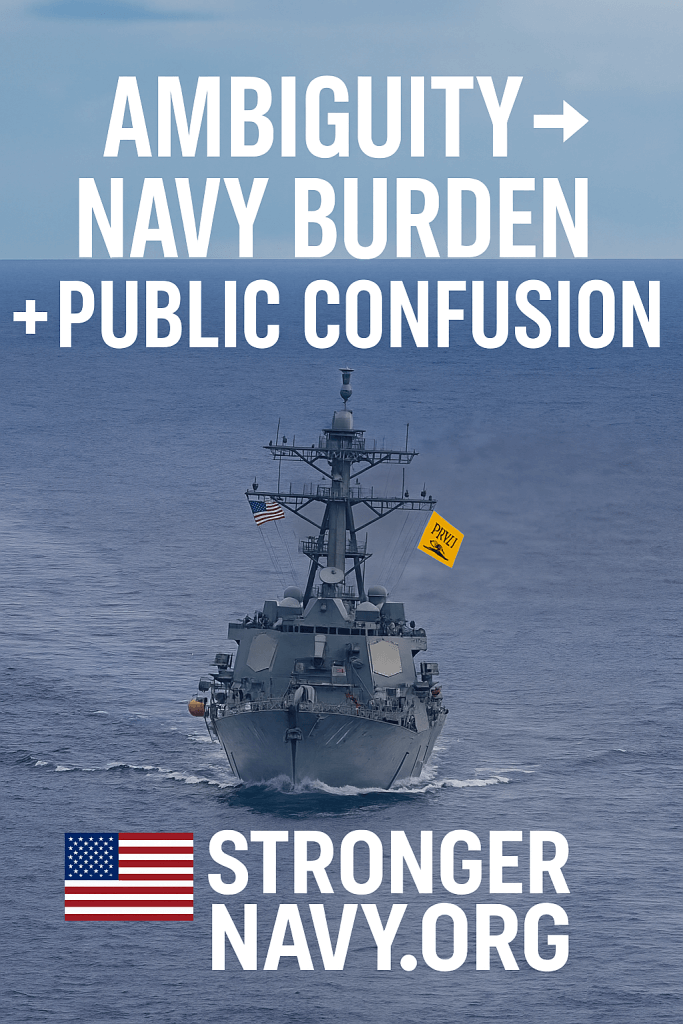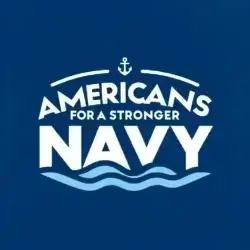

Introduction
For more than two years, I’ve been writing about the Navy, America’s role in the Pacific, and the choices our leaders face. What I’ve learned is simple: policies that sound abstract in Washington — like “strategic ambiguity” — land hard on the decks of U.S. Navy ships and in the lives of everyday Americans.
As a former destroyer sailor, I see the burden ambiguity places on today’s fleet. And as a citizen, I see the confusion it creates for the American public and the Congress that reflects their will. RAND and other respected voices have warned of the risks, but too often the public doesn’t hear the full story. That’s why I’m weighing in directly.
The Policy of Ambiguity
Since 1979, U.S. policy toward Taiwan has rested on “strategic ambiguity.” Washington avoids clear promises, keeping adversaries guessing but leaving options open. It worked for decades, deterring Beijing without emboldening Taipei. But under President Trump’s return to office, ambiguity is back in sharper form — and it carries consequences.
Trump’s Ambiguity and Taiwan’s Uncertainty
President Trump has made it clear he will not commit publicly to Taiwan’s defense. When asked, he replied: “I never comment on that. I don’t want to ever put myself in that position.” That is strategic ambiguity in its rawest form.
Even more striking is his transactional framing: “Taiwan should pay us for defense … We’re no different than an insurance company. Taiwan doesn’t give us anything.” Rather than signaling clarity of purpose, this remark underscores uncertainty. For naval planners, it adds complexity. For the American public, it raises questions about whether Taiwan is seen as an ally or a customer.
Clarity in the South China Sea, Ambiguity in the Strait
Contrast that with Secretary of State Marco Rubio’s recent words on Scarborough Shoal: “Beijing claiming Scarborough Reef as a nature preserve is yet another coercive attempt to advance sweeping territorial and maritime claims in the South China Sea at the expense of its neighbors, including by preventing Filipino fishermen from accessing these traditional fishing grounds.”
Here, the U.S. drew a firm line. But in the Taiwan Strait, ambiguity still rules. The Navy now faces a dual challenge: enforcing clarity in one theater while operating under uncertainty in another.
Why Americans Should Care
Taiwan’s leaders know the stakes. As Mainland Affairs Council Minister Chiu Chui-cheng warned: “If Taiwan were to be taken over by China by force, it will trigger a domino effect, undermine the regional balance of power, and directly threaten the security and prosperity of the United States.”
RAND research reinforces that point: Taiwan’s ability to resist depends heavily on the speed, clarity, and credibility of U.S. support. Delay or hesitation in Washington could tip the balance, not only for Taiwan’s survival but for America’s security and economic stability.

Ambiguity also creates a chain reaction at home: Public → Voters → Congress → Navy.
When the public struggles to understand why Taiwan matters, voters hesitate to back costly commitments overseas. And when voter sentiment wavers, Congress hesitates to fully fund the Navy’s needs. Ambiguity at the top becomes confusion on Main Street, which turns into hesitation on Capitol Hill — all of it compounding the burden on sailors at sea.
Implications for the Navy
Strategic ambiguity translates into an enormous burden for the Navy. Without knowing if or when the order to act will come, the fleet must prepare for every possibility:
- Breaking a blockade.
- Resupplying Taiwan.
- Responding to missile strikes.
- Countering a full-scale invasion.
RAND findings emphasize that even as Taiwan strengthens its defenses and increases spending, U.S. naval power remains indispensable. Only the Navy has the forward presence, logistics, and strike capacity to counter China’s military pressure. Ambiguity at the top means complexity at sea.
Implications for Our Allies
Mixed U.S. signals ripple outward. Allies like Japan and Australia watch Washington’s every move. If America is clear about Scarborough Shoal but vague about Taiwan, they are left to wonder where the next line will be drawn. RAND analysts describe Taiwan as facing “strategic anxiety” with its primary security partner — a sentiment likely shared across the Indo-Pacific.
The Bottom Line
Strategic ambiguity may give presidents room to maneuver, but it burdens the Navy with complexity and leaves Americans confused about what is truly at stake. Taiwan’s security — and the stability of the Indo-Pacific — depend on clarity of purpose, credible deterrence, and above all, a strong Navy.
That’s why we launched Charting the Course: Voices That Matter — a 24-part educational series breaking down how we got here, what went wrong, and what must happen next. Our goal is simple: educate the public, connect the dots, and build the support needed to close the readiness gap before it’s too late.
Let’s roll.

